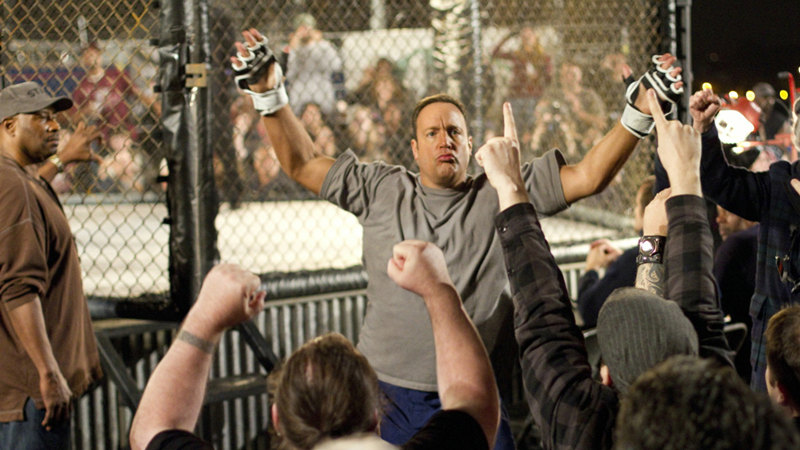I’ll level with you. I’m not a Trekkie. Sure, I know the big names in the Star Trek franchise (it’s hard not to), but if you had me try to differentiate from film to television show to action figure, well, you’d be mighty disappointed. I do, however, think I know a solid movie when I encounter one, and “Star Trek Into Darkness” is surely in that vein.
If my math is correct, this is “Star Trek” film number twelve. It’s also the highest grossing of them all, having raked in well over $450 million worldwide. Of course, just because something is popular and profitable doesn’t necessarily mean it’s good, but I’m confident that “Star Trek Into Darkness” has enough to offer that it would at least entertain even the toughest critic. The characters are thorough in their development, the plot has multiple layers that drive it to a long but not excessive 131 minute run time, and the pace is relentless enough to keep you more or less engaged from beginning to end.
While indirectly overshadowed by the on-screen action and special effects, the real star during “Star Trek Into Darkness” is the relationship between Kirk (Chris Pine) and Spock (Zachary Quinto). Their adventures have mandated new trust threshold since 2009’s “Star Trek” did its thing, and from the moment “Star Trek Into Darkness” begins, we understand they can work together, but not always seamlessly. Their back and forth is paramount to the USS Enterprise crew’s survival, which is frequently in jeopardy throughout “Star Trek Into Darkness.”
The film begins with Kirk being relieved of his command. Admiral Pike (Bruce Greenwood) calls out his reckless behavior and leadership, separates him from Spock and deems him incapable of service. A Starfleet meeting is held after a London installation is bombed, but while Pike, Kirk and Spock are sorting out the culprit, he attacks. A Starfleet rebel named John Harrison (Benedict Cumberbatch) is the instigator, but he flees to Kronos, the Klingon planet.
A seek and destroy mission is hatched, with Kirk at the helm. After nearly getting his you know what handed to him by the Klingons, Kirk, Uhura (Zoe Saldana), Spock, McCoy (Karl Urban) and the rest of the crew secure Harrison on board the Enterprise. When he reveals himself to truly be a genetically-engineered superhuman named Khan, Harrison reveals his purpose is to seek vengeance on Fleet Admiral Alexander Marcus (Peter Weller…who I spent most of the film knowing I recognized but unsuccessfully able to identify). But Marcus denies Kahn’s claims, leaving Kirk and his crew stuck in the middle and perplexed as to who to believe.
“Star Trek Into Darkness” is a big film, and not just in terms of budget. It relies on several intersectional stories all developing simultaneously in order to work, and the viewing audience has to invest significantly for the film’s duration. What pleased me most was seeing how the Enterprise crew entrust their well-being with one another despite their obvious imperfections as mortals, so much so that they can argue and fight among themselves but not forget they are accountable for everyone on board. Yes, the plot on its surface is dedicated to figuring out Khan’s intentions and taking him down, but it’s also a chance for Kirk to come into his own and realize he is responsible for and accountable to others, not just himself.
The performances here are excellent, especially Cumberbatch as the ruthless bad guy. He’s chilling and intimidating for all the wrong reasons, yet lacks the recklessness that often does in the villains in films like this. Quinto is excellent on a personal level with his performance. He steps out of the Vulcan sphere and puts on a show of leadership, poise and negotiation, much of which he probably picked up from either watching Kirk fail miserably. Simon Pegg plays Scotty with just the right paranoia and professionalism; his gentle yet firm desire to ensure those on the bridge understand the ship’s integrity is critical, and without him, “Star Trek Into Darkness” would probably have ended about a third of the way in. The film as a whole is well acted with precision and passion, demonstrating a modern twist on a traditional sci-fi genre.
If there is a point where the film was just below par, it would be the script, crafted by Roberto Orci, Alex Kurtzman and Damon Lindelof. The non-combat dialogue is generic and best and poorly placed at worst; it feels as though it is at times intentionally trying to shatter the film’s brisk pace. In fact, most of it is arguing between the main characters, and considering they’re leaping back and forth between disagreeing about humanity and their emotional personal banter, it grows old fast. The performances are thankfully strong enough to help overlook the occasional poorly placed one-liner that falls flat, and while probably minor at the end of the day, it did stick out in my mind.
Given the film’s almost $200 million budget, it’s not unreasonable to have high expectations. For the most part, I felt satisfied that director J.J. Abrams stepped up his game with this second installment. It is darker than the first, and the protagonists are led to some shady venues and decisions by the antagonists, upping them moral ante more so than in the 2009 title. In its own way, “Star Trek Into Darkness” possesses a fine balance of important cinematic elements that fit together in a polished package.
Video:
The film is presented in a sharp 1080p 2.35:1 video transfer that does HD proud. While I can’t imagine most of the sets and backdrops stand alone without technological enhancement, they do blend with the actual sets, props and actors pretty well. Bright colors are very vivid in this film, and the highlight in addition to this is probably the combat scenes, where everything from shots of the Enterprise making its way through space to fights on top of high-speed flying vehicles is shot from various angles and edited together tightly so you can’t blink. The image throughout is grain free and clear, lending much needed credibility to a space adventure that already pushes your disbelief.
Audio:
Make no mistake. This English 7.1 Dolby TrueHD soundtrack came to play. The explosions, punches and wharping all reign through very thoroughly, and it’s music to your ears. One element that gets lost, sadly, is natural background noise. It’s trumped by a pretty solid musical score from Michael Giacchino that enhances what you’re seeing on screen with much ease. Near the film’s end, Spock is sprinting after Khan, but you don’t hear footsteps hitting pavement or excessive breathing at all. The surround sound is pushed to a great place, however, and all in all, the vocals, action and combat are easy to listen to. Additional audio selections include French, Spanish and Portuguese 5.1 Dolby Digitals, while subtitle choices are English, French, Spanish and Portuguese.
Extras:
The set Paramount sent to me was a three disc offering, with Blu-ray 3D, Blu-ray and DVD versions, plus a digital copy to boot. Some of the basics you’d expect to be here are present, but my absolute favorite has got to be the featurette talking about the space jump that Kirk and Khan make from the Enterprise to the enemy ship. Insightful? Sure. Cool? Darn right.
A Final Word:
“Star Trek Into Darkness” is an exhilarating film, but it doesn’t sacrifice quality to get there. I’ll remember the characters and their interactions more so than anything else, and for a title that is basically rehashing names and roles from many years prior, that’s got to count for something.


